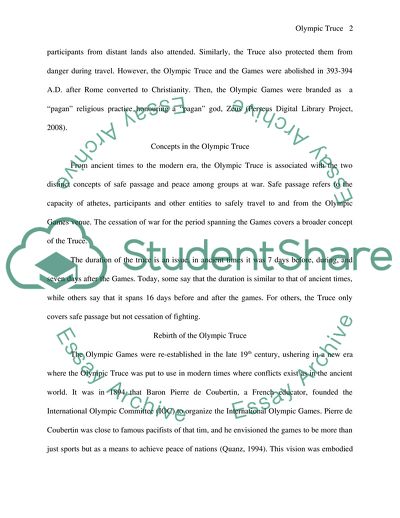Cite this document
(The Olympic Truce and its Applicability in Modern Times Assignment, n.d.)
The Olympic Truce and its Applicability in Modern Times Assignment. https://studentshare.org/sports-and-recreation/1719407-critically-discuss-the-concept-of-olympic-truce
The Olympic Truce and its Applicability in Modern Times Assignment. https://studentshare.org/sports-and-recreation/1719407-critically-discuss-the-concept-of-olympic-truce
(The Olympic Truce and Its Applicability in Modern Times Assignment)
The Olympic Truce and Its Applicability in Modern Times Assignment. https://studentshare.org/sports-and-recreation/1719407-critically-discuss-the-concept-of-olympic-truce.
The Olympic Truce and Its Applicability in Modern Times Assignment. https://studentshare.org/sports-and-recreation/1719407-critically-discuss-the-concept-of-olympic-truce.
“The Olympic Truce and Its Applicability in Modern Times Assignment”. https://studentshare.org/sports-and-recreation/1719407-critically-discuss-the-concept-of-olympic-truce.


